I am often asked where I get the yarn that I dye for Ancient Arts. One would think it should be a simple process. Go to the yarn store, choose something nifty and nice, buy it, take it back to the studio, dye it, and start hugging it! Alas. It isn’t anywhere near this easy.
Sourcing yarn is complex. Every dyer will have their own way of doing this, buying from wholesalers, retailers, directly from mills, or even hand spinning their own yarn. Regardless of the means of purchase, we all have to find good sources that have the quality of fibers and spinning that works with what we want to produce. The yarn also has to be suitable for hand dyeing, which means no chemical treatments or coatings that will interfere with the hand dye process (or with our ethos of limiting our environmental impact). The source (or mill) has to be able to produce enough yarn for us to be able to keep up with demand, but must not have such huge order minimums that we have to buy an entire boatload either (one container at time will do nicely). And of course the yarn has to meet our standards – and at Ancient Arts we are yarn connoisseurs and passionate stitchers (and weavers) so we are fussy!
Once we find a good source of yarn that meets these criteria the fun starts! We plan the potential new yarn(s) with the mill, and they make a test spin for us. They send it to us, and I test dye it, and then we test knit it! (Oh the hardships we go to, petting many and various yarns.) The testing is designed to tell us how well the yarn will dye, and how well it will stand up to use. If a yarn is weak or prone to pilling it gets the boot. If it doesn’t take colour well, no matter how nice the handle and wear is, too bad we don’t want it.
So let’s have a look at the latest batch of yarns to interview for a place with Ancient Arts!
Yarn comes in as raw yarn. It is spun, but it doesn’t look like the final product at all. It is limp, kind of squished, and is a blank canvas waiting for the magic!
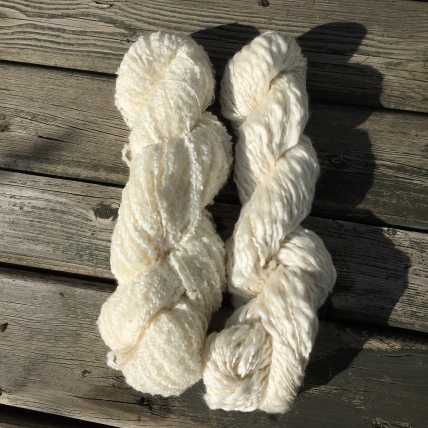
Once the yarn is dyed it changes dramatically. It fluffs, it has colour, and it takes on its final character. Yum!
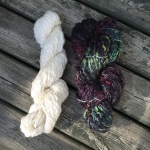
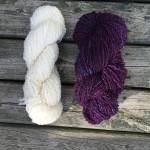
Here we have a set of the yarns I am currently interviewing. They are all dyed in one of two colours (Kismet and Frolic), chosen as I know those colours very well and how they behave. If they come out true to the colourway that tells me a lot about the potential for the yarn. If they change, then that means decisions have to be made about the suitability of the yarn.

This set of boucle yarns shows that three of the four yarns take dye very well, are easy to use to get beautiful effects, and stand up well to the abuse hand dyeing can put a yarn through. When testing I boil the yarn, slap it around, and pretty much get as mean as I can to it to simulate wear and tear. Notice that one yarn is different. This yarn has viscose in the blend and this is the reason it is paler in colour. It was in the same dye pot as the other three but the fibre content has dramatically affected the end results. I wouldn’t use this yarn as it is spun because the colour isn’t satisfactory. Instead, it would need to be redone with the viscose content decreased and perhaps just restricted to one ply of the boucle (if you look closely you can see one ply is nearly pure viscose already and it’s very pretty as a contrast). Three of the four yarns get a thumbs up on the dye test.
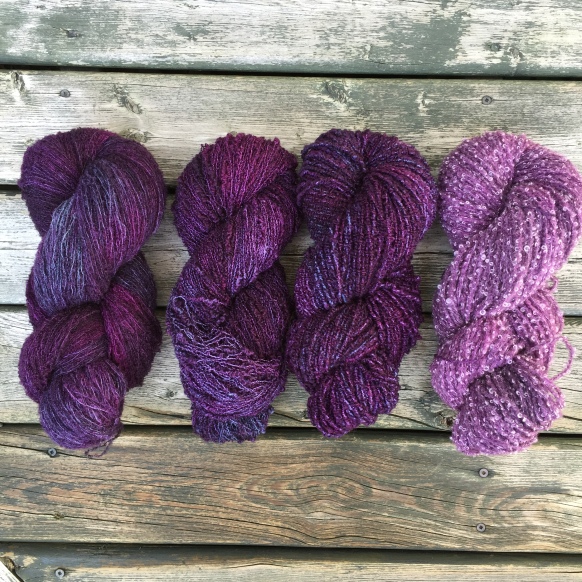
This bulky yarn did not pass the test and failed the interview. I tried it in two different colours to give it every chance to shine. It is pretty, but isn’t as vivid as it should be, and the binder plies are not durable. They have not taken dye well, and they are already looking frayed!

This spiral yarn (left) and this chunky yarn (right) do pass the dye test! Both of them are vivid and glow with colour. They also stood up beautifully to being pushed hard in the dye process, with no wear, pilling, or shredding in spite of their structure. They have excellent potential based on their handle and their luminous qualities!

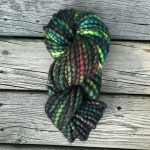
So where do we go from here? Next come the knitting tests! We will swatch the yarn, we will conduct rip tests (where we knit the swatch, rip it back and reknit multiple times), and we will look at knitting trends and what customers want. We are already dreaming of lush cowls, big dreamy sweaters, and fun easy shawls. If you have thoughts on these yarns do please comment and let us know what you like!








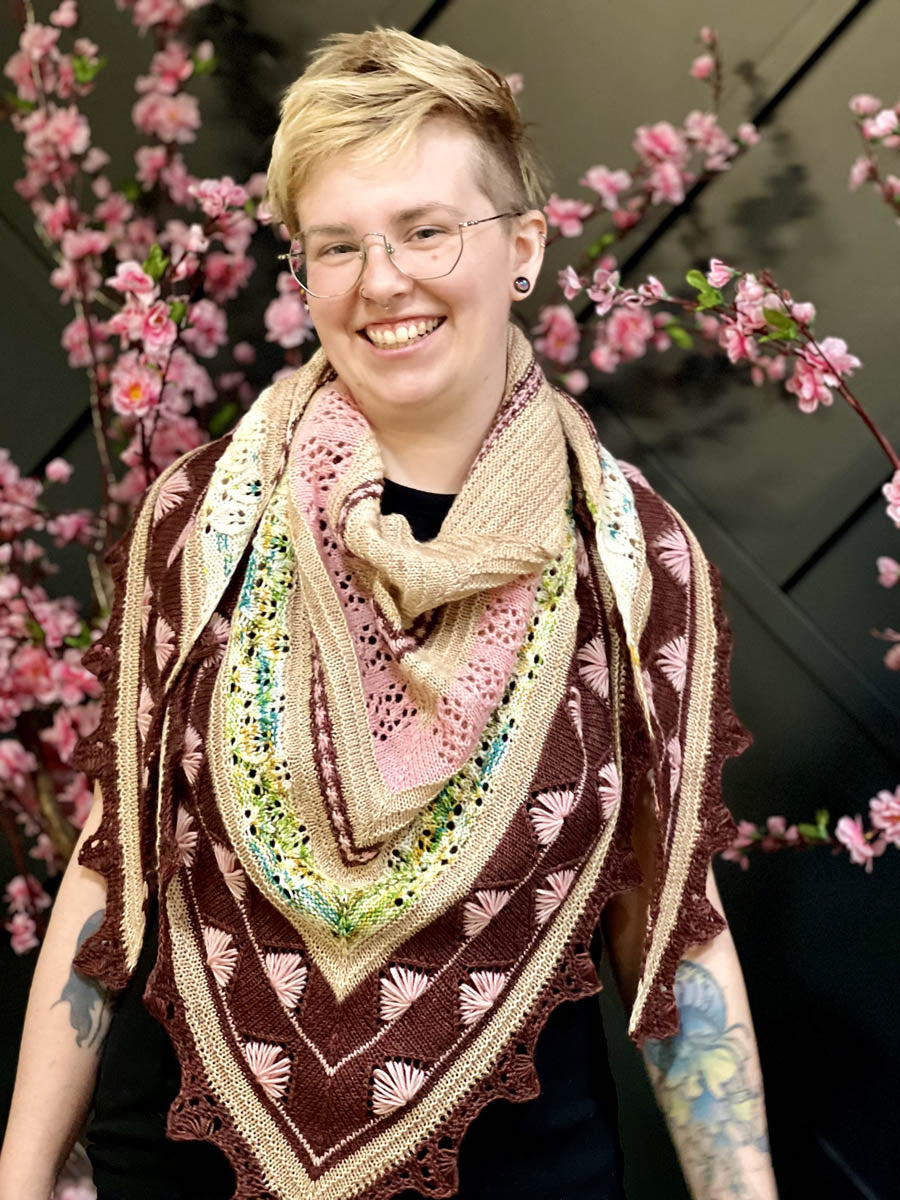

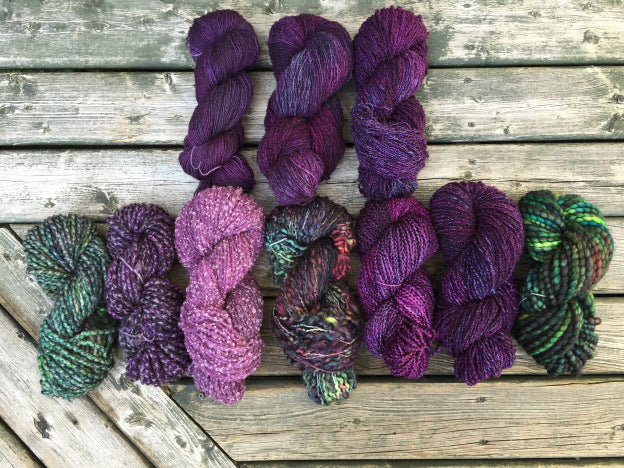
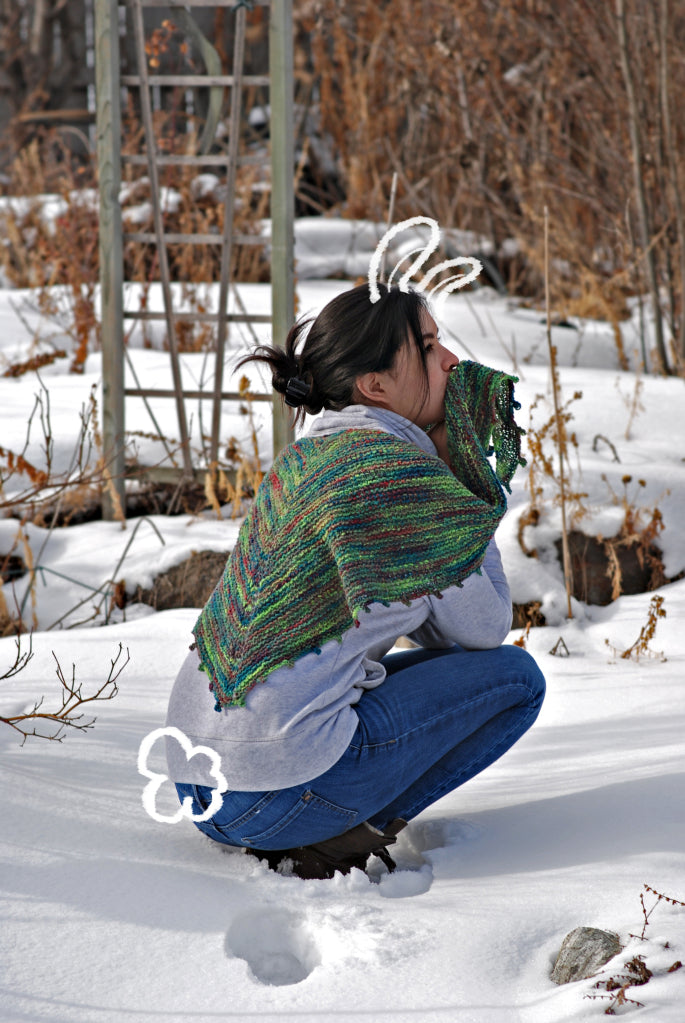

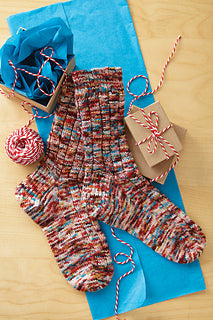
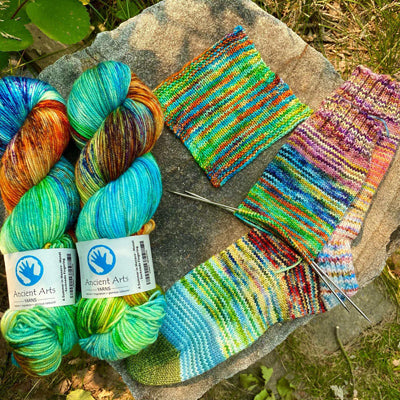
Leave a comment (all fields required)